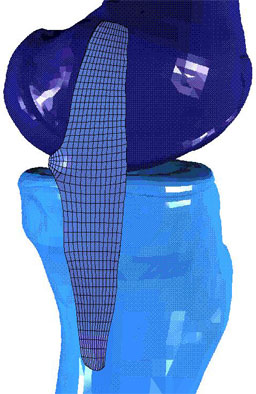Latest News
April 29, 2010
By Anthony J. Lockwood
Dear Desktop Engineering Reader:
 |
TrueGrid, the hex, shell, and beam mesh generator from XYZ Scientific Applications, is one of those high quality, widely deployed tools used for FEA and CFD simulations that is a quiet, but powerful presence in all sorts of industries. It is compatible with most popular simulation codes like Abaqus, ANSYS, LS-Dyna, and NASTRAN, and TrueGrid generates control parameters, options, loads, contact surfaces, and conditions. A key attribute of TrueGrid is that everything that you’ve always wanted to be under your control is under your control.
Engineers and scientists have leveraged TrueGrid to model all sorts of unbelievable things like a 747 to aid in the analysis of the 9-11 disaster, dyes used to make coins at the U.S. Mint, golf clubs, engine parts and ram jets, and even body parts like the foot, heart, brain and skeleton to aid in designing ejection seats for jets and crash dummies. In fact, one industry where TrueGrid is really big happens to be biomechanics.
I was recently asked to check out a number of articles, patent filings, and research/technical papers where TrueGrid played a pivotal role in biomechanical simulation and modeling. I must confess that some of these papers – well, OK—most of these papers were out of my league. My formal education in biomechanics stopped after a couple of undergraduate classes, so encountering such titles as “A Three-Dimensional Nonlinear Kinematic Finite Element Model of the Human Cervical Spine Under Dynamic Inertial Loading” and “Evaluating the Anterior Stability Provided by the Glenohumeral Capsule: A Finite Element Approach” gave me cause to make wisecracks to myself about meeting Glen O’Humeral at the Troy House Pub near Yonkers Railroad Station in 1973.
Making fun of myself aside, this is fascinating stuff. The biomechanics of brain injuries, risk assessments of the spines of aviators, heart value operations, and lots of bones, spine, tissue, and muscle issues modeled and simulated with TrueGrid providing the key capabilities. Even complex assemblies like hands, feet, and cell matrices have been modeled with the help of TrueGrid.
If you have anything to do with biomechanical modeling and simulation and suspect that a better mesh generator might be the key to greater productivity and more insights, the offerings on the other end of today’s Check It Out are right up your alley. If biomechanics isn’t your thing, there’s still plenty of good reading for you. Go to the top of the page you land on. There, you’ll find articles on the use of TrueGrid in such areas as CFD, crash worthiness, hydrodynamics, electromagnetics, and the interaction of fluids and structures.
As I said, this is fascinating stuff. I was drawn into it, completely trashing my per diem. Take your time to browse the TrueGrid library of technical papers. This is good stuff.
Thanks, pal.—Lockwood
Anthony J. Lockwood
Editor at Large, Desktop Engineering
Subscribe to our FREE magazine, FREE email newsletters or both!
Latest News
About the Author
Anthony J. Lockwood is Digital Engineering’s founding editor. He is now retired. Contact him via [email protected].
Follow DE





